Join us for a series of essays about science fiction TV series that, while popular with viewers, were cancelled early on by the networks. Some of the programs to be covered include Threshold (2005), Almost Human (2013-4), and the U.S. version of Life on Mars (2008-9).
I didn’t know there were so many vampires committing capital crimes in Los Angeles in this century. Ordinary criminals can’t even get air time on a webcast there. It seems that most L.A. killings have a connection to a vampire somewhere: undead plastic surgeons taking off a little blood along with the cellulite, blood-sucking hit-and-run automobile victims, even immortal morgue attendants who siphon blood from corpses. They’re there all right, as depicted on the CBS television series Moonlight starring Alex O’Loughlin as “vamp” private eye Mick St. John.
Moonlight aired on CBS on Friday nights, 9P.M. ET, from September 28, 2007 to May 16, 2008. Ratings showed that its pilot episode finished first for its night with viewers between the ages of eighteen and forty-nine, a very desirable demographic. On November 5, 2007, the Writers Guild of America went on strike, affecting all scripted television shows; production was halted on Moonlight by December 19, 2007 with twelve episodes completed. Earlier that month, the president of CBS, Les Moonves, had stated that “Moonlight was likely to return for a second season.”
In January of 2008, Moonlight won the award for Best New TV Drama of 2007 at the People’s Choice Awards. The writers’ strike came to an end on February 12 and the series returned with four new episodes on April 25. In spite of these renewed prospects, which included satisfactory audience ratings, CBS announced the show’s cancellation on May 13.
Before the pilot episode was even produced, there had been a huge shake-up in the cast that changed the focus of the entire series. Alex O’Loughlin was cast as Mick St. John by creators and executive producers Trevor Munson and Ron Koslow when Warner Bros. Television commissioned a twenty-minute test presentation in 2007. The producers and network executives liked O’Loughlin but they were dissatisfied with the others in the main cast. They found the actor playing St. John’s vampire friend too old in comparison with O’Loughlin—Munson explained that the studio wanted Moonlight to play to an audience that was “a little younger and hipper.” Producer David Greenwalt recast the roles of Mick’s girlfriend, Beth Turner, vampire friend Josef Kostan, and former wife Coraline. The roles were filled by younger actors who, like O’Loughlin, would have greater appeal to a more youthful audience.
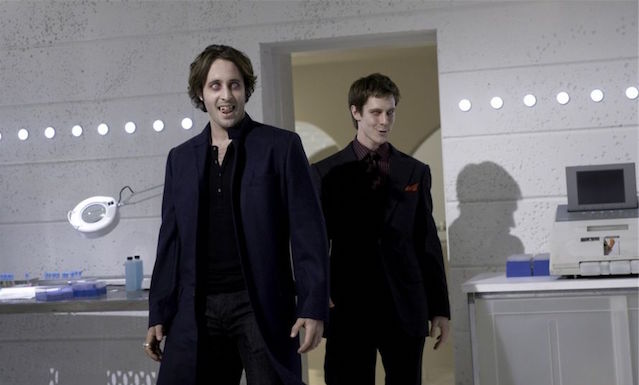
Joel Silver pushed for the boyish-looking Jason Dohring to play the 400-year old vampire Josef; he is therefore less of a father-figure to Mick and more of an equal. Dohring’s portrayal also fits the twenty-first century concept of a yuppie business entrepreneur. Sophia Myles plays Beth Turner who, with wide-eyed curiosity about Mick, takes on the role of an intrepid investigative reporter for BuzzWire, a webcast news organization. Shannyn Sossamon as Mick’s ex-wife Coraline is believable as a glamorous 1950s female vampire in flashbacks and as a complicated modern-day girl now working as a photographer for the same webcast company as Beth.
The opening scene of the premiere episode, “No Such Thing As Vampires,” has Mick St. John onscreen giving an interview about his life as a vampire. It’s a clever tactic that gives the viewer a brief, helpful rundown of the rules for living in human society that guide him. Questions are asked by an off-screen female interviewer while Mick responds to the camera:
Interviewer: Do you sleep in a coffin?
Mick: No, that’s an old wives’ tale. I sleep in a freezer. And while we’re on the subject: garlic is tasty on pizza.
Int: Does it repel you?
Mick: It repels my dates sometimes. Toss holy water on me, I get wet. Crucifixes, okay, if you like that kind of thing. Oh, and I definitely can’t turn into a bat. That would be cool though, wouldn’t it?
Int: What about daylight?
Mick: Daylight’s not good. Daylight’s not good. The longer I’m in the sun, the worse I feel.
Int: But you don’t burst into flames.
Mick: Not if I can help it.
Int: How do you kill a vampire? Wooden stake, I’m guessing.
Mick: No. A wooden stake won’t kill a vampire. Flame-thrower will kill a vampire. Or we could lose our head. I mean, literally. Other than that, we heal.
Int: You seem like a very nice guy. But don’t vampires kill people?
Mick: Most vampires don’t have boundaries or rules, but I do. I don’t hunt women. I don’t hunt children. I don’t hunt innocents. But there are predators out there who need to be dealt with.
Int: Is that why you became a private investigator?
Mick: It’s a way to use my special abilities.
Int: Any advice for the vampire wannabes out there?
Mick: Yeah. Stay out of my way.
[Scene change. Mick’s narration over a shot of him lying in a freezer]: I often wonder what it would be like if I had the opportunity to explain myself. But that’s just a fantasy.
This scene, and the rest of the script for the episode, was written by creators Trevor Munson and Ron Koslow, and directed by producer Rod Holcomb. Besides setting up a few of the rules that Mick describes, the first scene is a showcase for actor Alex O’Loughlin, who portrays Mick St. John with youthful enthusiasm, a bit flippant but also sharp-edged.
Moonlight has been described as a supernatural romance and we certainly see the instant chemistry between Mick and Beth Turner, who first meet at a crime scene where a female college student is found murdered. The victim has bloody bite marks on her neck and is drained of blood—on her webcast, Beth refers to a “vampire slayer” as the killer. The murder links Beth and Mick romantically as well as setting up their partnership in solving crimes that often involve vampirism in some way.
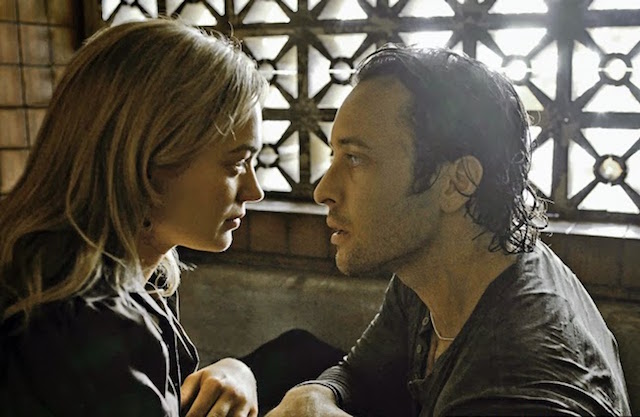
Their separate investigations lead Beth and Mick to a college professor who is clearly one of those “vampire wannabes” to whom Mick had directed a warning in that opening interview scene. Prof. Christian Ellis conducts a study group in the basement of one of the campus buildings at the college where he teaches ancient studies—the study group, though, is more of a cult following that consists largely of female students. Like other cults, they listen with rapt attention as their leader, Prof. Ellis, pontificates on the significance of vampirism in history. Cult leader Ellis concludes the session by having his followers swear an oath of their loyalty. The truth is that Ellis uses his position and the remote location as a venue for seducing young females. He also happens to believe he is a vampire although, he claims, not the kind of vampire portrayed in films.
Mick appears in the basement after Beth escapes Ellis’ attempt at seduction and quickly shows Ellis what a real vampire is like. As it turns out, Prof. Ellis isn’t the killer. The writers use the classic mystery story ploy of making the killer someone who remains in the background and then is discovered to be the “surprise twist” at the end. The vampire slayer isn’t a true vampire, either, but merely another wannabe emulating the professor: a student named Daniel, Ellis’ teaching assistant.
What I find more interesting in “No Such Thing As Vampires” is Jason Dohring’s portrayal of Josef Kostan. Josef is a wealthy financier. Dohring plays him as a lover who doesn’t like to get his hands dirty. His cocktail parties are like most we see on television: music playing, men and women in attire once described as “casual chic,” attractive women sidling up to the boss. At one such party, Josef offers Mick a girl saying, “1982 was a very good year.” Mick turns him down and leaves, and Josef nonchalantly clamps his teeth down onto the girl’s forearm as she gives a soft moan—a brief but piquant example of the mores of the rich and mythological.
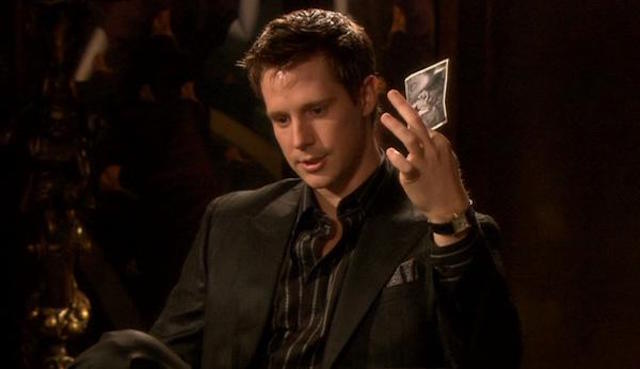
In the succeeding episodes, Beth continues to learn new things about Mick the vampire and we, as viewers, get to see how the rules for being a modern-day vampire differ from those fostered by European superstitions of an earlier era. Let’s call it Moonlight’s exploration of vampire culture in the twenty-first century. For instance, it appears a vampire doesn’t have to wait to be invited in before he or she can cross someone’s threshold. When Mick first confronts Prof. Ellis in “No Such Thing As Vampires,” he surprises the professor in his office without offering any explanation of how he gained entrance.
And vampires aren’t supposed to cast reflections—that’s one of those hard-and-fast rules that Universal Pictures’ 1931 Dracula (starring Bela Lugosi) has reinforced. In Episode 2, “Out of the Past,” Mick lets us know that he couldn’t have a photograph taken of himself in the past because film stock contained silver, which blurs the vampire image. But in modern times, he can appear in digital imaging. So these vampires should also have shadows and reflections in mirrors, right? Have we seen a mirror reflecting Mick’s image? The question bothered me, so I searched through the series to see if vampire Mick in Moonlight does cast a reflection. I found it! Check out Episode 3, “Dr. Feelgood.” In a flashback to 1952 Los Angeles, Mick wakes in bed after his vampire wife has “turned” him. He goes to the bathroom to check himself out: for a couple of seconds, we see his mirror image as he examines his fangs. In addition, in the first scene, when Beth comes to his apartment, we see Mick’s reflection—clearly—in the shiny surface of his apartment door. Vampires, at least as imagined in this series, DO cast reflections!
The killing of vampires by using stakes is rare in Moonlight. As we see in “Dr. Feelgood,” Mick has a stake driven into his chest by a fellow vampire and is left to die. When Beth finds him, Mick is unable to move but he can groan, “Pull it out!” Once she does, Mick recovers and the gaping wound heals.
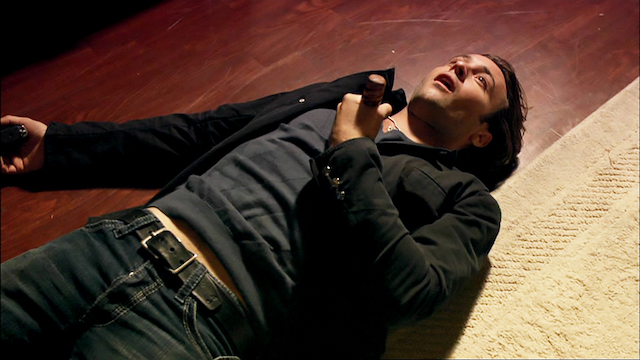
Sometimes a vamp detective just has to work during the day. Mick does, and in L.A., he wears sunglasses, shields his eyes from direct sunlight with a convenient file folder, and heads into shade or indoors as quickly as feasible. He gets into real trouble with exposure to the sun in Episode 4, “Fever.” Chased by the hired killers of an arms dealer, Mick protects a murder witness as they flee into the California desert. Mick becomes weak and feverish, and can only be sustained by lying in a bathtub of ice in an abandoned motel. This time, it’s Beth to the rescue. She gives him the only thing that can revive him enough to regain his abilities: a healthy gulp of her blood.
Just before biting into Beth’s forearm, Mick tells her, “At some point, you’re going to have to stop me.” Afterward, she comes out of the bathroom on shaky legs, holding a towel around her forearm, but a hired killer is waiting in the room and attacks her. With surprising ferocity, Mick smashes through the bathroom door and dispatches the killer. Apparently, when it comes to severe allergies to sunlight, a good rest on ice and a short draught of human blood will get a vampire on his feet again in no time.
Perhaps it’s stating the obvious, but vampires don’t eat food. They can’t digest it. That becomes a problem for Mick as he engages in human social customs in Episode 9, “Fleur de Lis.” Hired by a wealthy man to follow his wife, Mick waits for him at the same outdoor café where he had previously met with Beth. While Mick sits at an empty table, an impatient waiter approaches him:
Waiter: I’m sorry, sir, but you can’t just keep sitting here without ordering something.
Mick: I’m waiting for someone.
Waiter: Have a sandwich while you’re waiting.
Mick: No thank you.
Waiter: Something off the dessert menu?
Mick: Not hungry.
Waiter: Then why do you keep meeting people at restaurants? (Holds up his hand in warding gesture). Fine. But maybe you should consider that your date’s not showing.
This scene gives us a slice of levity in an otherwise serious storyline—for me, it’s reminiscent of the scene in 1931’s Dracula where Bela Lugosi offers his guest a rare old bottle of wine. After Dracula pours a glass, the guest asks, “Aren’t you going to join me?” In his heavy Hungarian accent, Dracula famously replies, “I never drink… wine.” In a novel entitled The Last American Vampire (2015), author Seth Grahame-Smith offers a solution to Mick’s not-eating-in-restaurants-while-socializing-with-humans problem. Grahame-Smith’s vampire, Henry Sturges, has made an art of moving around the food on his plate so that it looks like he’s eating. It’s a simple little game that apparently works—too bad the Henry Sturges solution came seven years too late for Mick St. John to digest.

As these rules become clear, the changing relationship between Beth and Mick remains at the center of the series. I see the story arc of the Beth-Mick romance as part of an overall examination of 21st century youth culture at play with the Moonlight perspective of a vampire culture. The two worlds, one that is youth-oriented and the other vampire-oriented, are blended intriguingly during the course of the series, enhancing the viewer’s involvement in the series, especially for the youthful audience that is the intended target.
Beth briefly becomes a member of the exclusive cult of vampires in Episode 6, “B.C.”. Investigating a fashion model’s sudden death, Beth is led into a new kind of drug culture; the blending of vampire and youth culture is seen in an elite social club exclusive to the young and hip. Club Valles is a high-end social club that has the latest music and dancing and an elite VIP room. The club is managed by a very old acquaintance of Josef Kostan, a vampire called Lola, who is distributing a potent new drug named “Black Crystal.” The secret ingredient in B.C. is vampire blood.
In the interest of pursuing her story, Beth drinks some B.C. and visits Mick, finding herself strangely affected by the drug. “Do you feel like this all the time?” Beth asks him. “I feel everything. When I was walking, the breeze felt like individual molecules brushing against my skin. I felt people in their houses. I could feel their lives.” And later, she describes the drug’s influence on her: “The drug made me feel invincible. Like I was more than human. I felt like the hottest thing on the planet.” As Mick tells Josef, “Apparently, the ‘high’ is us.”
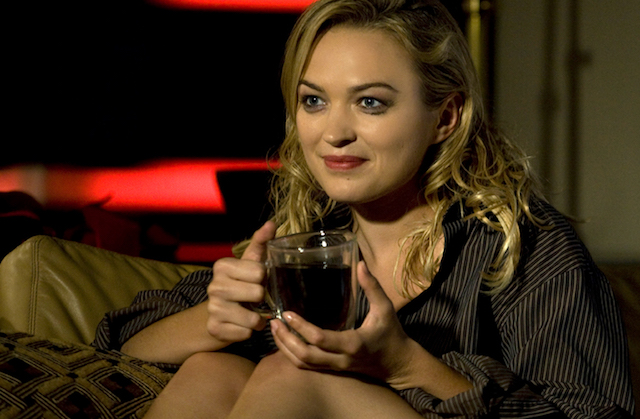
There is a tragic element to the relationship between Mick and Beth that, perhaps, is intended to be Shakespearean. They come from opposing classes in a real sense, and their star-crossed partnership illuminates the clash of today’s youth culture with the vampire culture that the show depicts. Mick points out to Beth that his condition is a curse, not a gift. Nowhere is that evidenced more than when Beth’s boyfriend, Josh Lindsey is shot by a hired killer and on the verge of dying in “Love Lasts Forever,” Episode 11, written by Josh Pate and directed by Paul Holahan. Using his Army medical training, Mick does everything he can to save Josh’s life. Beth, in a fury, insists that he “turn” Josh while there’s still time; Mick refuses and Josh dies in Beth’s arms. She blames Mick for Josh’s death, even though the ambulance medic tells her that Mick had worked heroically on Josh. Mick tells her, “I did everything possible to save him.” She retorts, “Everything humanly possible.”
For his part, Mick’s world gets turned around in Episode 12, “The Mortal Cure,” when his former wife Coraline finds a cure for vampirism—an organic compound that lasts for several months before reverting the vampire to his/her natural state. It’s temporary, but Coraline is working with a scientist to make it permanent. After explaining the origins of the compound, which goes back centuries, she lets Mick use the cure.
Mick is human! And the next episode —“Fated To Pretend”—begins like an episode of Baywatch: Mick is on a boardwalk, eyed by bikini-clad girls, taking in the sun and eating hotdogs. Reconciled with Beth, they enjoy an idyllic afternoon on the beach like any two humans would.
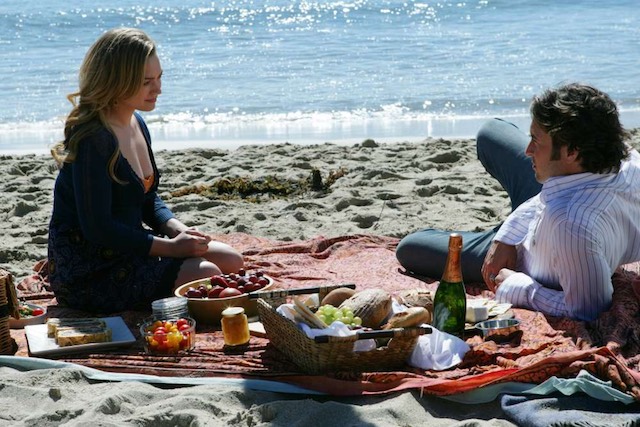
Their revitalized relationship does not last long; soon, Mick has to make a decision that means giving up his mortality. Beth and a new Assistant DA are kidnapped by a vampire doctor they had been investigating. Mick is desperate to rescue them. When Josef arrives at Mick’s apartment, Mick is gathering up what weapons he has. Seeing the futility of Mick’s intentions, Josef drops his boyish smile and indolent attitude, baring his fangs and tossing his friend across the room. Mick realizes he can’t combat another vampire as a human. “You were right,” Mick tells Josef. “I can’t save Beth as a human. But I can save her as a vampire. You have to turn me back. You have to turn me back right now.”
Josef replies, “Mick, you’re human again. After all you went through to get the cure, you’re going to give it up this easy?
“You think this is easy for me? This is not easy. Okay? I don’t have a choice.”
“What you’re asking me to do—”
“Listen to me! He has Beth. He has my Beth. So please, brother.
“Forgive me.” Josef clamps down on Mick’s neck.
I cheered for this—Mick has no business being a mere human! No way. And the following scene, in which Josef joins Mick in a claw-and-fang battle with the vampire plastic surgeon and two of his fiends, was a marvel to behold. It was a rare occasion to see Josef at his most ferocious. Vampire solidarity, indeed.
If you look back over this episode and watch Mick as a mortal, you may find, as I did, something uniquely affecting about this vampire culture. Josef and others are endearingly accepting of Mick—and Beth, for that matter—as humans. In “Fated To Pretend,” Mick and Beth visit Mick’s morgue attendant/vampire friend to view a dead body. The morgue attendant tells him: “You’re freaking me out, man! You a human. It’s not natural.” Funny, surely. But point made. Mick is still accorded a certain respect.
At this particular juncture in our lives, as a new administration is taking office here in the United States, it seems to me particularly important that we be accepting of other cultures. That’s the message I’m taking away at this moment in time, as I’m re-watching Moonlight, whether that had been the intention of the series’ producers or not. In this TV show, we see a vampire society deliberately working alongside a human society, adapting along with that society by integrating the two cultures. In the persons of Mick and Beth, we experience shared loss as well as shared belonging. I consider that an important and timely takeaway for any TV viewer: we should be as ready to accept the stranger in our midst as Mick and his cohorts do. Acceptance is the key word. Let’s all strive for acceptance of the other, and remember that the “other” could one day be ourselves.
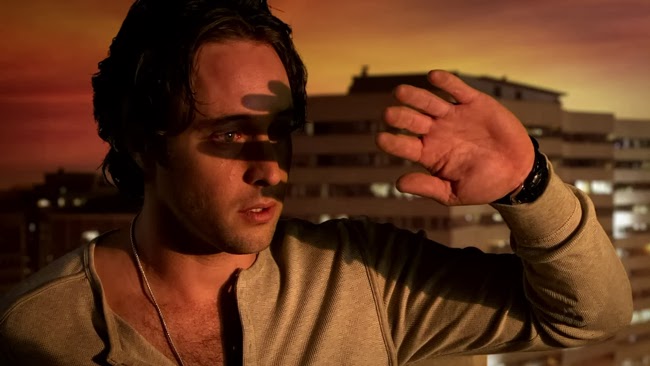
Ted Krulik was born at the beginning of the television age. As a child, he watched first-run episodes of Rocky Jones, Space Ranger, starring Richard Crane, and the 1950s Flash Gordon, starring Steve Holland. A new and exciting series of the late 1960s, a little known TV show named Star Trek, filled Krulik with dreams of a someday world of aliens and remarkable technical devices. In the 1970s, Krulik attended the earliest Star Trek conventions in Manhattan. At one of these, he met George Takei, Ensign Sulu himself, who told him that Star Trek was never coming back to television except, maybe, as a new animated series. “You see,” Takei said, “all the sets have been struck; all the uniforms are gone. There’s nothing left to go back to.” Famous last words.










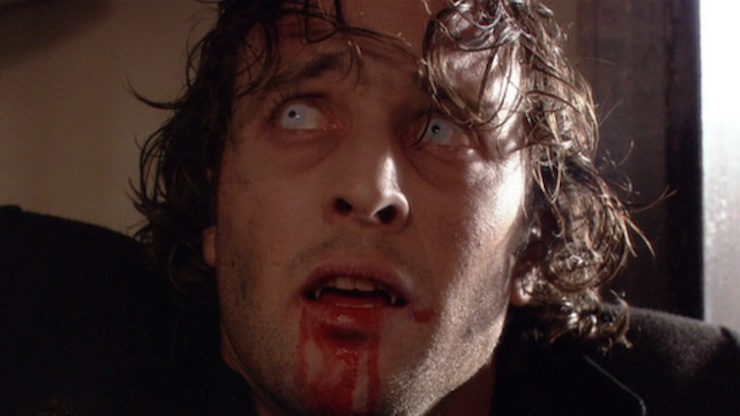
The moving the food around solution to avoid eating has been around since children were invented. Ask any parent.
At the same time as MOONLIGHT was on CBS, BLOOD TIES was on Lifetime. MOONLIGHT billed itself as a paranormal romance, but BLOOD TIES was straight up urban fantasy, based on the novels of Tonya Huff. They make very interesting contrasts on contemporary takes on vampires in the present day. MOONLIGHT was much lighter and vampires not so scary; BLOOD TIES was a world filled with monsters and demons where vampires were the least of the monsters, and Henry the hero vamp fought evil rather than participating in it.
Both showed that changing with the times was necessary camouflage for ageless vampires.
The girl I had living with me got the dvd set and one day while home sick and bored, I popped in a disc and watched. I was still bingeing when she got home that evening and joined me. It wasn’t a great show but man I really enjoyed it.
What I especially liked was the specific scene you mentioned with him using his medic training. I understand dramatic tension, but I think this is the only show where they don’t go. “You’ve been shot. Let’s start planning the funeral.” I think I may have fist pumped when I first watched that scene.
<Spoiler alert of Sherlock>
Compare this to Mary’s death in Sherlock. The aquarium they are in is specifically named, and it just happens to be RIGHT NEXT to a hospital with an A&E department (the U.K. Version of ER). Watson is a doctor who has battlefield experience of dealing with bullet wounds. And yet he does nothing as she dies in his arms. <sigh>
i couldn’t help thinking if Moonlight during that scene, and now you’ve gone and done an article on it! :
WillMayBeWise — Thanks for your comment. What makes that scene especially poignant for me is that Mick and Beth SAVED Josh. He was okay when they reached him in the trunk of the car. It was a sudden surprise that he was shot by one of the hired killers.
It was a scene I’ve watched before, not in a science fiction or horror film, but in a number of war movies. In “Saving Private Ryan,” I never expected that Tom Hanks’ character would be killed. His death, and the fact that the older Ryan had come to Arlington to visit his grave site, was achingly sad. I had seen that same kind of sudden death in a 1940s war movie that starred Humphrey Bogart: “Sahara.” Attacked by Nazis, Bogie is with a British officer who talks brilliantly about how he plans to irrigate the desert — and then is suddenly shot in the head and dies. And, of course, the protagonist in “All Quiet on the Western Front” is suddenly shot to death at the end of the 1930s movie AND the novel.
Assistant DA Josh Lindsey in “Moonlight” falls into this same category of tragic unforeseen death.
My one annoyance at “Moonlight” is that the vampires have so many of the perks of being vampires but so few of the drawbacks. Sunlight? Bad, but it’s okay to go out in it for a few hours if you need to, so you can easily pass for human that way. Everyone’s so paranoid about sun exposure these days, anyway. Food? Blood (easily obtained from a source at the morgue, no killing involved) is a rush they find extremely pleasurable. Sure, you can’t have prime rib any more, but trading food requirements for youth, longevity, strength, heightened senses, etc?
As vampires go, the ones in “Moonlight” have it far too good, which made them kinda boring. The original source novel was a bit darker, with more drawbacks, and it would have been interesting to see those onscreen.
Still, the “Moonlight” vampires (and Beth, played by Sphia Myles) were attractive and cool for the brief time they were on the air.
James M. Six — I agree with you. Certainly Josef Kostan often seems bored with his long life. It’s like the old adage: Youth is wasted on the Undead.
After mentioning I was watching Moonlight on DVD, my daughter reminded me that we used to watch another series Forever Knight. The premise was pretty much the same but the vampire’s name was Nick not Mick.
God I miss this show. Felt so betrayed after CBS cancelled it (despite over 7 million viewers on a Friday slot…not bad numbers at all). Alex O’Loughlin went on to Three Rivers (total rubbish) before landing in his hit crime series (which I don’t watch, even though he’s a personal favorite of mine). They should have given this show at least one more season. With the pace that it progressed, viewers could have had the full closer they deserved before sending O’Loughlin on his happy way to Hawaii.